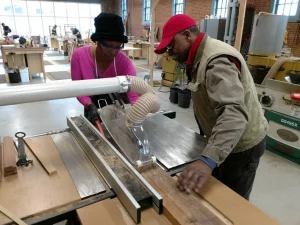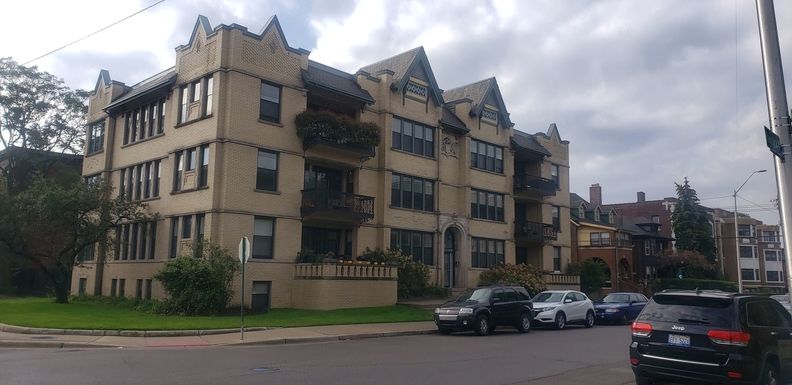James Turner Is Leading ‘a Movement’ to Repair Detroit Windows — and Save Its History
February 9, 2022Arielle Kass
Feb. 9, 2022
This is the first in a series of conversations with Black entrepreneurs and business leaders about how they got started and what they’ve learned along the way. You’ll find more conversations at crainsdetroit.com throughout the month of February.
 There isn’t an easy line to be drawn between historic preservation and chicken paprikash, but James A. Turner draws it anyway.
There isn’t an easy line to be drawn between historic preservation and chicken paprikash, but James A. Turner draws it anyway.
It was his first exposure to the Hungarian dish at 15 that made him see the value of different cultural groups, he said. Since that fateful meal, Turner’s interest in other cultures has expanded to include the architectural differences each brought to metro Detroit — the different building characteristics, the housing stock.
Turner, who owns Turner Restoration, was long intrigued by the built environment. He subscribed to Old House Journal and Fine Homebuilding and volunteered with what was then Preservation Wayne. But he had a whole other career, working at IBM and for other third-party vendors, before a two-week window restoration workshop sent him on another path.
“I got down there and I realized that’s what I should be doing,” said Turner, 73. “I got back and I started.”
In the intervening two decades, Turner’s expertise has been in high demand. He travels the country restoring windows, and has recently been spending about half his time in Louisville, working on the preservation of a 1932 post office in Shelbyville. He’s working with the Kentucky Center for African American Heritage and the city’s Mount Zion Baptist Church, which owns the building. But the pandemic has led him to want to be closer to home. Turner plans to look for more jobs in and around Detroit.

Turner Restoration restored 300 windows and doors at the Sherbrooke Apartments in the Midtown neighborhood of Detroit.
The first job he took, for $5,800, took six months — “I was paying them to restore their house,” he quipped — but it gave him the confidence to move forward, stripping and reglazing, priming and painting, and coming out at the end with a finished product.
“You just kind of figure it out. You stumble forward,” Turner said. “I’m still trying to figure it out.”
At first, he had ambitions of building up a big business, with as many as 25 employees. But Turner soon learned with more people come more management responsibilities, and more people depending on him for their livelihood. It took the joy out of the restoration work and meant he spent less time doing it.
So now he prefers to work with just three to five people and has trained many who have gone on to establish their own restoration careers.
One of those he trained is Andrea Sevonty, the owner and primary craftswoman at Sevonty Restoration. Sevonty said she apprenticed with Turner for several years before he “kicked me off,” urging her to open her own business. That was 13 years ago.
Sevonty still considers Turner a mentor and said he’s helped dozens, if not hundreds of people, get started in the trade, through teaching workshops and bringing people on who show an interest in the work. Turner is modest, she said, but his work is nationally known.
“It’s an undercurrent, a movement,” she said of his influence. “He’s incubating people across the country. He’s giving them the confidence so they can start their own business.”
Over the years, Turner said, he’s learned much of his success is based on building trust. And patience, which lets him see the benefits of reworking what’s there, rather than replacing the old with something new. He relishes stripping a window down to bare wood, waiting for the paint to cure before returning it to a frame.
Modern society doesn’t value maintenance, he said, but it’s imperative to him.
Maintenance reduces the environmental impact of building new when something can instead be restored. There are also cultural implications to keeping and repairing old buildings, and value in not erasing people’s history by tearing down their buildings. Being a preservationist, Turner said, is a holistic way of life. He sees himself as a steward for the environment at large.
Turner said the pandemic, in particular, has taught him that so few things are permanent, so he has to preserve what he can. The work grounds him, he said, much as his time in the water did as a high school swimmer.
“I want to lose myself in the exercise,” he said, comparing swimming to the joys he gets in restoration. “I want to do it until I feel the pleasure of it, until I’m drunk with it. … I get lost in it, too.”
